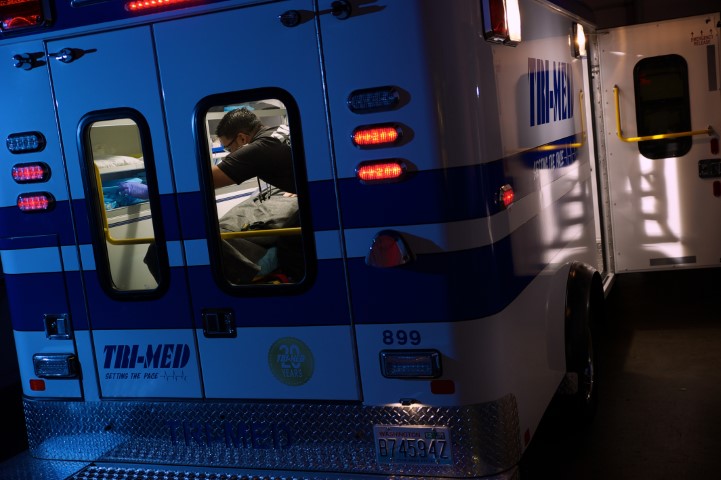
The Seattle medical community recognizes that critically ill patients require a higher level of clinical care. Our CCT ambulances—the equivalent of a mobile intensive care unit— carry advanced life support and diagnostic equipment in addition to the supplies standard to BLS transport.
What is a Critical Care Transport (CCT)?
Our CCT ambulances are staffed with a critical care trained Registered Nurse and an Emergency Medical Technician. The required criteria for nurses aboard CCT ambulances include: emergency room and/or critical care nursing experience, certifications in Advanced Cardiac Life Support, Pediatric Advanced Life Support and mechanical ventilation training.
CCT ambulances are equipped with cardiac monitors, infusion pumps, mechanical ventilators, and inverters that allow for safe transportation during advanced medical treatment. With this equipment the medical team is able to monitor the patient’s heart, provide ventilations, administer medications, and much more.
The most common reason a patient requires CCT ambulance is for a transport from one hospital to another or an “interfacility transport.”
What are the medical capabilities of a Tri-Med CCT unit?
Our CCT unit provides emergency and ICU level of care. CCT Registered Nurses operate under the supervision of a physician via written protocols and/or online medical command. They carry mechanical ventilators, Cardiac monitors and a wide variety of emergency medications, and can operate above the scope of a paramedic, specifically transporting patients on medications administered intravenously controlled by infusion pumps.
Ailments/conditions that can be accommodated by our CCT team include:
- Post cardiac arrest
- Head injuries
- Heart failure
- Hemorrhaging
- Respiratory failure/arrest
- Severe hypertension
- Threat to maternal/fetal life
- Trauma
Are there any differences in the documentation required for the transport?
As with our BLS transports, we require a completed Physician Certification Statement (PCS) Form.
Unsure which level of care is right for your patient?
In most cases the level of care needed is determined by the patient’s physician. In general:
Basic Life Support (BLS) units are capable of transporting patients who are stable and can provide:
- Oxygen
- Monitoring of vital signs
- Saline lock
- Patient Movement
Critical Care Transport (CCT) units are capable of transporting patients who are stable with a moderate to high risk of deterioration and/or unstable patients who require:
- Respiratory/Airway management (ventilators, deep suctioning)
- Blood infusion
- Cardiac monitoring
- IV management and medication administration
